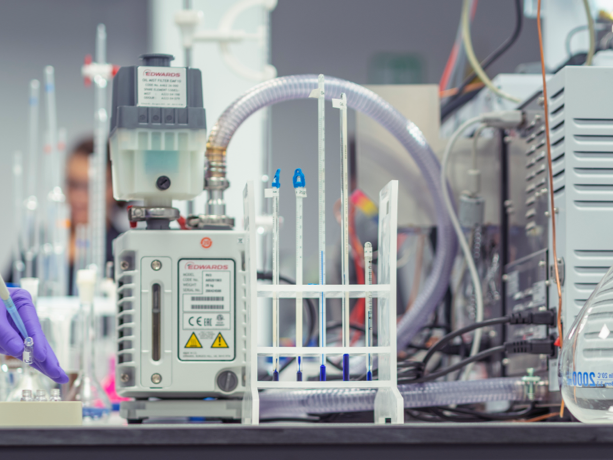Groundbreaking New Research Could Be Cost-Effective Solution to Produce Green Hydrogen

A joint research team from the School of Energy and Chemical Engineering at UNIST (Ulsan National Institute of Science & Technology) and the Department of Materials Science and Engineering at KAIST (Korean Advanced Institute of Science & Technology) has successfully developed a new water electrolysis catalyst that can produce hydrogen gas efficiently and stably.
Water electrolysis is a groundbreaking technological advancement that uses electricity to split water into its component parts – those being hydrogen and oxygen. This typically uses platinum or iridium as a catalyst to stimulate the reaction. However, the technology has struggled to become commercially viable due to the prohibitive costs of platinum, as well as its relative scarcity and sustainability as an element.
However, a promising new discovery may just be the necessary step forward to make electrolysis more cost-effective. The team, led by Professor Jungki Ryu and Professor Dong-Hwa Seo, has developed a bifunctional catalyst using ruthenium, silicon, and tungsten to use during water electrolysis.
On its own, ruthenium oxide would be an ineffective catalyst component; it has a ‘relatively low activity for hydrogen evolution reactions (HER)’ and a ‘low stability for oxygen evolution reactions (OER) under acidic conditions’.
However, by using a nanocrystalline core of ruthenium oxide (RuO2) and a silicon (Si) tungsten (W) co-doped shell, scientists found the resultant material exhibited strong activity for HER and OER. In fact, the RuSiW blend was even found to perform comparatively better than platinum on carbon (Pt/C) catalysts, with the tungsten film offering the structure higher stability than iridium-based materials.
During the course of the study, the team found additional benefits to using a RuSiW electrocatalyst. Ruthenium is relatively low cost to produce, and the process has far fewer carbon emissions than the production of platinum, making it a more environmentally-friendly processing option.
This is a huge breakthrough towards finding more sustainable and economically viable methods of producing green hydrogen power. According to Professor Ryu, ‘the development of this three-element catalyst is significant as it has the potential to replace expensive platinum and iridium simultaneously.’ It also opens up the possibilities to create electrocatalysts from less explored materials, which could lead to even more future advancements.
Material science expertise at The Lab
If you’ve got questions about the materials you use as a business, or require an investigation into a recent equipment failure, make The Lab your first port of call.
We have expertise across a wide range of disciplines, and can offer you advice and recommendations on everything from corrosion analysis to material quality. Contact our team today to learn more about how we can help you.
Contact The Lab for more information about our materials testing services
For more valuable insights, news, and information about the industry, discover The Lab’s News and Knowledge Hub…
Google’s DeepMind AI Tool Makes Material Science Breakthrough | Hydrogen Fuel Cells: Are They the Future of Transport? | Scientists Uncover New Way to Make Polymers Stronger
- Author
- Dr Holly Edwards
- Date
- 03/04/2024
